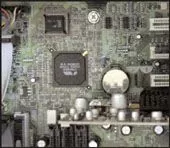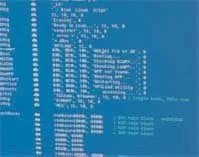Download our free Monitoring Fundamentals Tutorial.
An introduction to Monitoring Fundamentals strictly from the perspective of telecom network alarm management.
1-800-693-0351
Have a specific question? Ask our team of expert engineers and get a specific answer!
Sign up for the next DPS Factory Training!

Whether you're new to our equipment or you've used it for years, DPS factory training is the best way to get more from your monitoring.
Reserve Your Seat TodayAnd unfortunately, that's exactly what was happening. Lippincott's legacy masters were increasingly prone to failure. There was no way of getting support or spare parts for the discontinued systems, and Lippincott found himself making repairs from cannibalized equipment and a dwindling stock of hoarded spare parts.

"I had kept enough spares over time, so I was managing to keep them up. But once something goes wrong with these systems, it's hard to get them back up again. And it's a pain to set them up again once you have them running, too," said Lippincott.
The remotes were deployed throughout Alabama and Georgia, monitoring older systems, mostly legacy analog microwave sites, according to Lippincott. "The microwave sites are older, but it's all significant equipment," said Lippincott. "Also, in all of the places we use tower lights, which are also monitored by old remotes, and if they go out it's a pretty hefty fine."
Lippincott knew he had a problem, but he didn't know the solution to his problem was at his fingertips. Lippincott already was using T/MonXM to poll the more than 500 DPS Telecom remotes that
were monitoring the newer parts of his network, and he was familiar with its capabilities. T/MonXM can monitor 24 channels of alarm data in any current or legacy industry protocol (ASCII, Badger, Datalok, DCPX, DCPF, DCM, Larse, NEC, SNMP, TABS, Teltrac, TL1, TRIP, and 20 others). But until he saw his legacy equipment listed as an option in the T/MonXM software, Lippincott didn't know that DPS Telecom had developed a solution for polling his legacy remotes.
Lippincott's tech support call to Ron Stover turned into an expert consultation about how to create a legacy support solution for Southern Company.
"Glenn was very interested when I told him there was a software module for support of his legacy system," said Ron Stover. "I told him that we'd developed this solution for another client who had the same problem. We started discussing Glenn's issues with the legacy masters and how we could replace them with his T/MonXM system."
As a test, Ron sent Lippincott a copy of the software module and instructed him to install it on his existing T/MonXM system. But at first it didn't work. The DPS software was designed for 8-bit RTUs. Lippincott's remotes were 20-bit units.

The answer to that issue was a customized solution. "Ron and I talked it over, and DPS gave us a quote to do it, and then they did it," said Lippincott.
The customized solution had a hardware component and a software component. The alarm data from Lippincott's existing remotes is transported in 20-bit packets across an FSK network. DPS Telecom engineers adapted an existing product, the FSK Converter, to convert the data from 20 bits to 8 bits. New software was written to allow T/MonXM to read the legacy protocol.